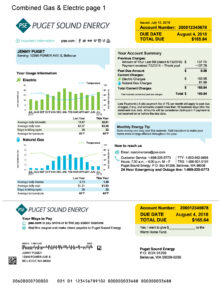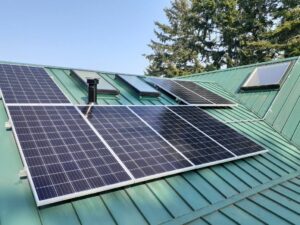Solar System Payback
Solar System Payback
Historically, solar system payback has been used to describe the time it takes for an investment to pay for itself, similar to Return on Investment. However, the basic assumption behind a payback calculation is that this is a discretionary expenditure, meaning you can choose to invest in this energy equipment or not, and if you don’t, you can put that amount of money in the bank and make some interest with no risk.
 Paying an electric bill is not a ‘discretionary’ expense; you have no choice! By buying a solar electric system you are taking money that you would be “giving” to your electric utility and investing it in your home. For example, on average utilities increased their prices 1.8% from 2016 to 2018 nationwide. The US Energy Information Administration forecasts that utility rates will rise between 33% and 83% over the first 25 years of a solar system’s life. A solar system will not only protect you from those rate increases, it gives you the control over your electricity costs – allowing for more accurate financial planning, smarter energy consumption, and a greater accumulation of savings.
Paying an electric bill is not a ‘discretionary’ expense; you have no choice! By buying a solar electric system you are taking money that you would be “giving” to your electric utility and investing it in your home. For example, on average utilities increased their prices 1.8% from 2016 to 2018 nationwide. The US Energy Information Administration forecasts that utility rates will rise between 33% and 83% over the first 25 years of a solar system’s life. A solar system will not only protect you from those rate increases, it gives you the control over your electricity costs – allowing for more accurate financial planning, smarter energy consumption, and a greater accumulation of savings.
 A residential grid-tie system in western Washington will typically pay for itself in around 10 to 14 years just from the electricity it produces. Considering that solar panels come with a 25 to 30-year warranty, and have a 30-40 year design life, that basically means that after they’ve paid for themselves they go on to generate ‘free power’ for another 15 to 25 years. That’s 30 years of positive cash flow and money in your pocket in the form of avoiding electric bills.
A residential grid-tie system in western Washington will typically pay for itself in around 10 to 14 years just from the electricity it produces. Considering that solar panels come with a 25 to 30-year warranty, and have a 30-40 year design life, that basically means that after they’ve paid for themselves they go on to generate ‘free power’ for another 15 to 25 years. That’s 30 years of positive cash flow and money in your pocket in the form of avoiding electric bills.
In addition to your reduced power bills, a home solar panel system increases the value of your home should you decide to sell. This can be between $3-4 per watt of solar installed or $20,000 for every $1000 saved on electrical costs to run the home. This means that even if you don’t plan to stay in your home for many years to come, you will see a return on your investment in the increased sale price of your home.
